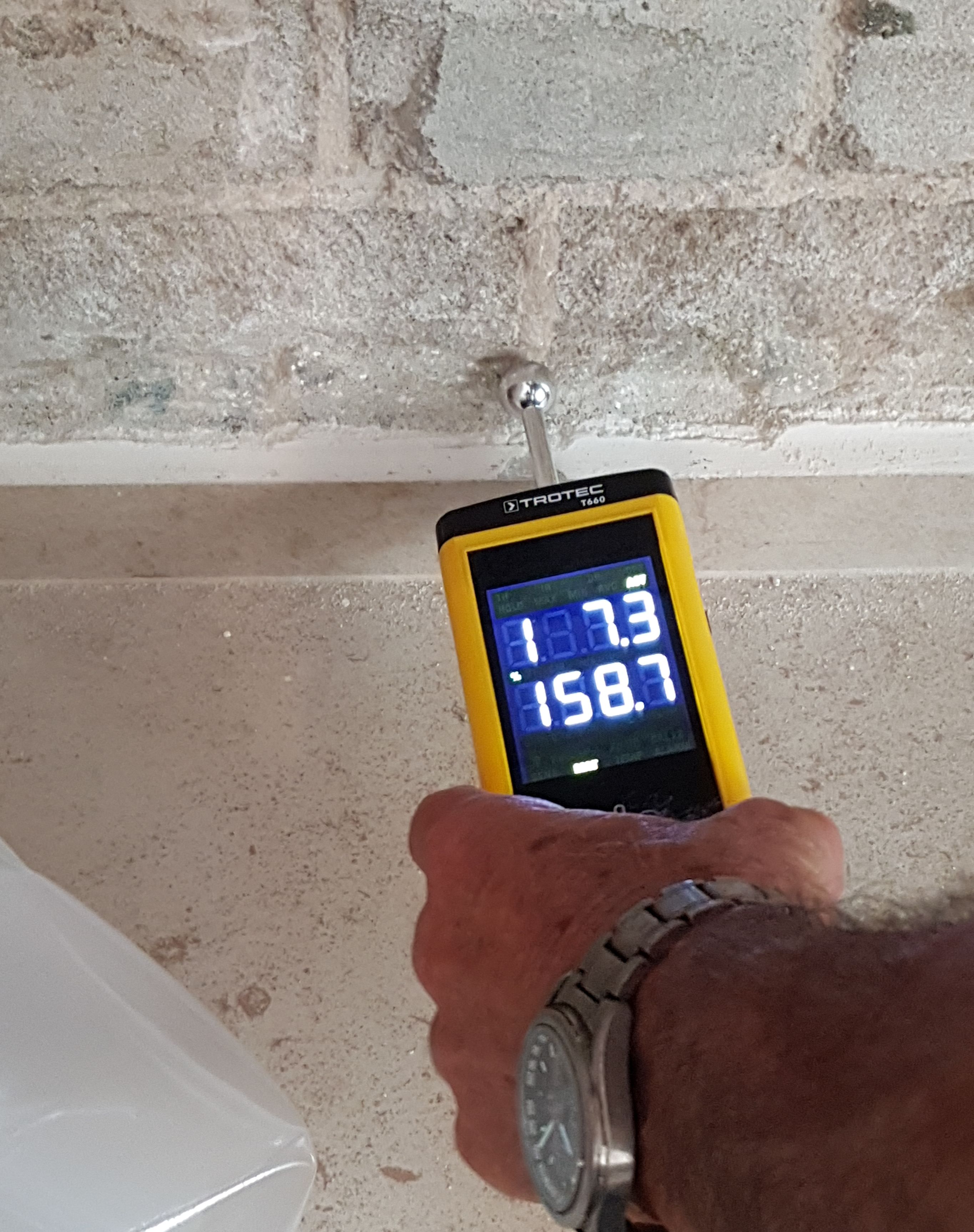Moisture Meter Reviews: Contrasting the most effective Designs for Expert and DIY Usage
Moisture Meter Reviews: Contrasting the most effective Designs for Expert and DIY Usage
Blog Article
Delve Into the World of Moisture Meters: Everything You Required to Know
In the realm of moisture meters lies a globe of accuracy and usefulness that usually goes undetected. These devices, while relatively simple, hold a riches of info that can significantly influence various industries and applications. Comprehending how moisture meters operate, the various kinds offered, and their diverse usages can drop light on their importance in ensuring high quality and efficiency. By exploring the details of dampness meters, one can reveal a beneficial tool that transcends simple measurement, supplying insights that can make a significant difference in various fields.
Exactly How Moisture Meters Work
Moisture meters run by measuring the electric conductivity or capacitance of products to figure out the moisture web content existing. These meters are important devices across various sectors, including farming, woodworking, and construction. By making use of different approaches such as pinless or pin-type innovation, moisture meters supply exact analyses that help specialists make notified choices.
Pin-type moisture meters work by putting the sharp pins into the product being tested. The electric conductivity between the pins is then measured, with greater dampness levels bring about raised conductivity. Moisture Meter. On the various other hand, pinless dampness meters make use of electro-magnetic signals to scan a bigger location without causing any kind of damage to the product's surface. These meters are suitable for swiftly examining dampness levels in big areas or completed items.
Regardless of the method utilized, wetness meters play a vital function in protecting against problems such as mold and mildew development, structural damage, or item problems triggered by excess moisture. Comprehending how these meters work is important for ensuring the high quality and honesty of materials in different applications.
Kinds Of Moisture Meters
Given the important function moisture meters play in different markets, it is vital to recognize the different types offered to professionals for properly assessing wetness levels - Moisture Meter. There are largely 2 primary kinds of moisture meters: pin-type and pinless moisture meters

On the various other hand, pinless wetness meters make use of electromagnetic sensing unit plates to scan a bigger area of the product without creating any damages. This kind is ideal for promptly scanning large areas and is commonly made use of for flooring, walls, and ceilings. Pinless meters are practical for taking readings on completed surfaces without leaving any type of noticeable marks.
Both types of wetness meters have their benefits and are chosen based upon the particular demands of the job available. Comprehending the differences in between these kinds is essential for professionals to make accurate moisture analyses.
Applications Throughout Industries
Building and construction experts rely on dampness meters to evaluate the dampness degrees in building products like concrete, wood, and drywall, which is essential for keeping structural stability and protecting against issues like rot or mold. The floor covering market uses dampness meters to measure the moisture content in subfloors prior to mounting numerous flooring coverings, avoiding expensive damages due to excess dampness. In the food sector, dampness meters are used to keep track of and regulate moisture levels in products such as grains, nuts, and dried fruits to maintain freshness and top quality.
Tips for Utilizing Wetness Meters
Use the wetness meter's calibration settings to make sure exact readings when determining the wetness material in numerous products. Additionally, make certain the meter is set to the correct dampness range for the product you are gauging to acquire the most exact outcomes.
When utilizing a pin-type wetness meter, insert the pins to the appropriate deepness advised for the material being examined. This guarantees that the dampness analyses are drawn from the right depth within the product, giving an extra accurate depiction of its wetness web content. For pinless dampness meters, bear in mind to maintain proper call with the material's surface area to get trustworthy analyses.
Routinely check and change the batteries in your dampness meter to stop imprecise analyses due to low power. When not in usage to lengthen its lifespan and maintain its accuracy, Store the meter in a risk-free and completely dry area. By complying with these ideas, you can make the most of the performance of your dampness meter and acquire specific wetness material dimensions across various materials.
Maintenance and Calibration
To ensure the accuracy of moisture web content dimensions, regular upkeep and calibration of the moisture meter are important action in its proper performance. Maintenance includes keeping the wetness meter complimentary and clean from debris that can influence its analyses. It is necessary to follow the producer's standards for cleansing to avoid damages to the gadget. Additionally, normal calibration is needed to confirm the accuracy of the readings. Calibration readjusts the moisture meter to make certain that it gives constant and reputable results.
Calibration should be executed regularly, specifically if the moisture meter is utilized regularly or in important applications where specific dimensions are called for. Lots of moisture meters come with calibration tools or can be adjusted Moisture Meter by specialist solutions. Moisture Meter. It is advised to maintain a log of calibration dates and results to track the performance of the dampness meter over time. By keeping and calibrating the wetness meter frequently, individuals can rely on the accuracy of the wetness material measurements read here gotten.
Final Thought

To conclude, moisture meters play an important duty in various industries by properly determining the moisture web content of products. Recognizing just how these tools function, the different kinds readily available, and proper maintenance and calibration are important for obtaining reliable outcomes. Whether in manufacturing, building and construction, or farming, making use of dampness meters aids make sure quality assurance and efficiency in procedures.

In verdict, dampness meters play a vital role in various markets by properly measuring the moisture content of products.
Report this page